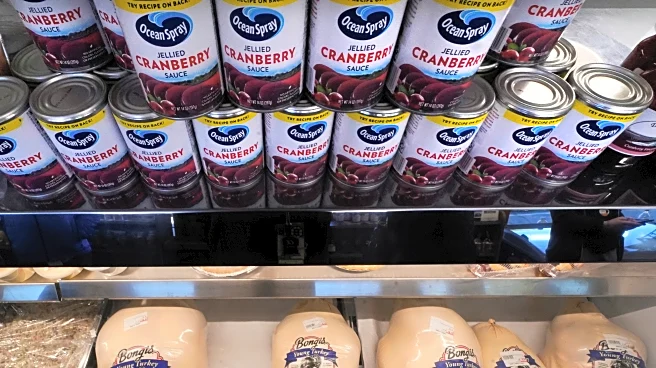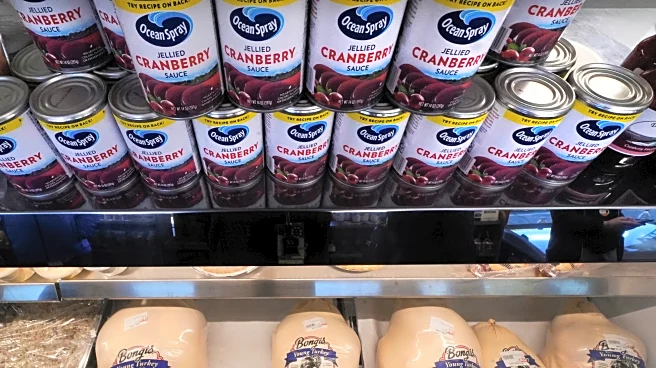What's Happening?
The Environmental Protection Agency (EPA) has announced a series of regulatory decisions under the Renewable Fuel Standard (RFS) that are set to significantly impact biomass-based diesel markets. These
decisions include higher Renewable Volume Obligations (RVOs), more restrictive small refinery exemptions, and mandatory reallocation policies. The changes are projected to dramatically increase domestic biomass-based diesel production and feedstock use by 2027. The EPA's proposed 'half RIN' credit for imported feedstock and fuel is a key policy variable, expected to reshape production decisions. The analysis projects a 20% increase in D4 RIN generation from 2023-2025 to 2026-2027, with domestic production rising significantly. The backloading of feedstock impacts to 2027 is a critical finding, with total feedstock use expected to rise by 48% compared to the 2023-2025 average.
Why It's Important?
The EPA's decisions are poised to reshape the biomass-based diesel market, with significant implications for U.S. agriculture and energy sectors. The projected increase in domestic feedstock demand could lead to higher prices and increased pressure on supply chains, particularly for animal fats and used cooking oil markets. The soybean oil market may also experience increased demand, potentially affecting vegetable oil prices. The massive D4 RIN bank provides a buffer for 2026, but as it is drawn down, the full impact of higher RVOs will be felt in 2027, leading to potential volatility in RIN prices. Market participants must prepare for substantial adjustment pressures and strategic planning to navigate these changes.
What's Next?
The implementation of the EPA's 'half RIN' proposal remains uncertain, with potential delays under consideration by the Trump administration. If finalized, the policy could lead to significant shifts in production and feedstock markets. Market participants should anticipate a two-stage adjustment, with moderate price increases in 2026 and more severe pressures in 2027. The transition will require careful monitoring of RIN prices and feedstock availability to meet compliance obligations. Stakeholders must remain vigilant to adapt to potential production bottlenecks and price volatility.
Beyond the Headlines
The backloading of feedstock impacts to 2027 highlights the importance of strategic planning for market participants. The scale of the projected increases suggests substantial adjustment pressures, particularly for domestic feedstock markets. The potential delay in policy implementation adds uncertainty, requiring stakeholders to remain flexible and responsive to changing conditions. The broader implications for U.S. agriculture and energy sectors underscore the need for coordinated efforts to manage supply chain challenges and price fluctuations.













